I’ll be straight with you—living with hard water is a hassle. It leaves your skin dry, your dishes spotty, and your appliances begging for mercy. That’s why I decided to invest in a RainSoft water softener, and let me tell you, it’s been a game-changer.
After months of research and real-world use, I’m convinced this system is worth every penny for anyone battling hard water woes. In this article, I’ll share my experience, break down the pros and not-so-great parts, compare it to other brands, and toss in maintenance tips to keep your system humming.
Trust me, you’ll want one too.
My Journey With The RainSoft Water Softener
When I moved into my new home in Texas, the water was rough—literally. My hair felt like straw after every shower, and my coffee tasted like it was brewed with regret. The final straw was the limescale buildup in my kettle; it looked like a science experiment gone wrong.
I knew I needed a water softener, and after scouring reviews, I landed on RainSoft’s EC5 model. It wasn’t a cheap decision, but the promise of softer water and a lifetime warranty sold me.
The installation process was a breeze. A RainSoft dealer came to my home, tested my water (13 grains per gallon, ouch!), and walked me through the system’s features. The EC5 is a sleek, Wi-Fi-enabled unit that connects to an app, which felt like a futuristic touch for a water softener.
The technician was professional, setting it up in my garage in under three hours. No mess, no fuss. I was skeptical about the claims—could it really make my showers feel like a spa and my laundry softer? Spoiler alert: it did.
Within days, I noticed a difference. My skin wasn’t as dry, and my hair felt silkier, like I’d upgraded my shampoo. The dishes came out of the dishwasher sparkling, no more cloudy glasses or spotty plates.
Even my washing machine seemed happier, with clothes feeling softer and colors looking brighter. The RainSoft Remind app was a pleasant surprise, notifying me when salt levels were low, so I didn’t have to guess. It’s been six months, and I’m still impressed by how seamless the system is.
Sure, it’s pricey, but the daily difference it makes is hard to ignore. My only gripe? The initial cost made me wince, but more on that later.
The Pros of RainSoft Water Softeners
- Advanced Technology That Feels Like the Future
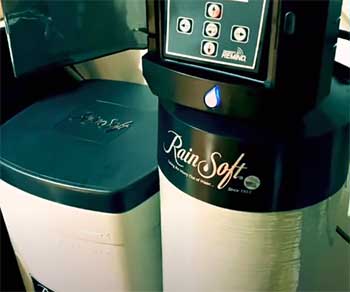
RainSoft’s EC5 and EC5-CAB models are packed with tech that makes them stand out.
The Wi-Fi connectivity and RainSoft Remind app let you monitor salt levels, water usage, and maintenance alerts from your phone.
It’s like having a smart assistant for your water softener.
The microprocessor controller adjusts regeneration cycles based on your household’s water use, saving salt and water.
I love how I don’t have to babysit the system—it’s smart enough to handle itself.
Plus, the digital display is user-friendly, even for someone like me who’s not a tech wizard.
- Top-Notch Water Quality
The whole point of a water softener is to tackle hard water, and RainSoft delivers. It uses a salt-based ion exchange process to remove calcium and magnesium, leaving your water silky smooth. My showers feel luxurious, and I’ve noticed less soap scum in the bathroom.
My coffee tastes better, and I’m not exaggerating when I say my skin feels less irritated. For anyone with eczema or sensitive skin, this could be a lifesaver. RainSoft’s systems are also certified by the Water Quality Association (WQA) and NSF, so you know the quality is legit.
- Durability and a Stellar Warranty
RainSoft’s systems are built like tanks. The injection-molded enclosures protect internal components, and the fail-safe tank-within-a-tank design prevents leaks. I’ve had zero issues with durability so far, and the limited lifetime warranty gives me peace of mind.
It covers the brine tank, resin tank, control valve, and electronics, which is more comprehensive than most brands. If I ever move, I can take the system with me, and RainSoft’s global dealer network will reinstall it. That’s a big win for someone like me who might relocate in a few years.
- Energy Efficiency
I was worried a water softener would spike my electric bill, but RainSoft’s systems are designed to sip power. The EC5 uses a low-voltage 24-volt system, and the automatic power outage recovery means it won’t lose its settings during a blackout.
I’ve noticed no noticeable increase in my utility bills, which is a relief. The system also optimizes salt and water use during regeneration, so you’re not wasting resources. It’s a small but appreciated perk for eco-conscious folks like me.
- Customizable Configurations
Every home is different, and RainSoft gets that. The EC5 and EC5-CAB models come in various configurations to match your household size and water hardness. My dealer customized the settings for my family of four, ensuring we never run out of soft water.
Whether you’re in a small apartment or a sprawling house, RainSoft tailors the system to your needs. This flexibility makes it feel like a bespoke solution, not a one-size-fits-all product.
The Not-So-Good Parts of RainSoft Water Softeners
- Steep Price Tag
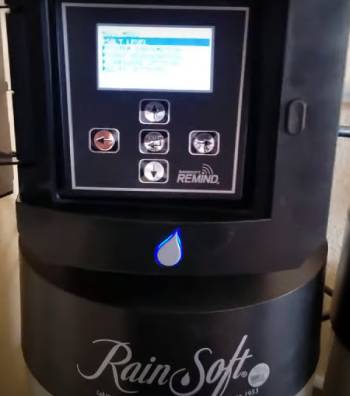
Let’s not sugarcoat it—RainSoft systems are expensive.
I paid around $7,800 for my EC5, including installation, which is way above the industry average of $1,000 to $4,000.
You won’t find prices on their website, which is frustrating.
Instead, you have to schedule an in-home consultation, and the quote depends on your water hardness and system configuration.
I felt a bit blindsided by the cost, and I’ve heard from others who got quotes as high as $13,000. If you’re on a tight budget, this might be a dealbreaker.
- Pushy Sales Tactics
The in-home consultation was informative, but the salesperson leaned hard into the pitch. They offered me a “limited-time discount” if I signed on the spot, which felt like pressure.
I’ve read online that others had similar experiences, with some feeling cornered into buying. I get that RainSoft wants to close the deal, but the hard sell left a sour taste. My advice? Take your time, do your research, and don’t let the “exploding offer” rush you.
- Maintenance Costs Add Up
While the system is low-maintenance, it’s not free. You’ll need to buy water softener salt regularly—about $10-$20 per 40-pound bag, depending on your usage. I fill my brine tank every six weeks or so, which isn’t a huge hassle, but it adds up.
If you opt for additional filters like the Ultrefiner II for drinking water, those need replacing periodically, and RainSoft’s proprietary filters aren’t cheap. I’ve also heard horror stories of pricey service calls if something breaks outside the warranty. Be prepared for ongoing costs.
- Salt Bridge Issues
Salt-based systems like RainSoft’s can develop salt bridges—hardened salt clumps that block the brine tank and mess with the softening process. I’ve had to break up a salt bridge once, which was a minor annoyance but took some elbow grease.
If you don’t check the tank regularly, it can lead to poor water quality or even damage the system. It’s not a dealbreaker, but it’s something to watch out for, especially if you’re not handy.
- Space Requirements
The EC5 isn’t massive, but it’s not tiny either. My unit lives in the garage, which works fine, but if you’re in a small apartment or tight utility closet, the space requirement could be an issue.
The additional reverse osmosis system under my sink also ate up more cabinet space than I expected. If storage is at a premium in your home, you’ll need to plan carefully.
Maintenance Tips To Keep Your RainSoft Running Smoothly
- Check for Salt Bridges Regularly
As I mentioned, salt bridges are the bane of any salt-based softener. To avoid them, check your brine tank every month. Grab a broom handle or a long stick and gently poke around to see if the salt feels crusty or solid.
If you find a bridge, break it up carefully—don’t go Hulk-smash on it, as you could damage the tank. I’ve found that using high-quality pellet salt (not rock salt) reduces bridging. RainSoft’s dealers can recommend the right salt for your system.
- Clean the Resin Bed
The resin bed is the heart of your softener, swapping out hard minerals for sodium ions. Over time, iron or other compounds can clog it, reducing efficiency. I clean mine every six months using a resin bed cleaner (available at hardware stores or through RainSoft).
Follow the instructions on the bottle—usually, you pour it into the brine tank and run a manual regeneration cycle. It’s simple but makes a big difference in keeping your water soft and your system healthy.
- Add a Pre-Filter for Extra Protection
My water has some sediment, which can gunk up the softener over time. I installed a pre-filter to catch dirt and sludge before it hits the system. It’s an extra step, but it extends the life of your resin bed and reduces maintenance headaches.
RainSoft doesn’t include a pre-filter, so you’ll need to buy one separately—about $50-$100. Trust me, it’s worth it to avoid costly repairs down the line.
- Monitor Salt Levels with the App
The RainSoft Remind app is your best friend for maintenance. It alerts you when salt levels are low, so you’re not caught off guard with hard water. I check the app weekly and keep a few bags of salt on hand.
Refilling the brine tank takes five minutes—pop the lid, pour in the salt, and you’re done. Just don’t overfill; leave a few inches of space to prevent bridging.
- Schedule Annual Checkups
RainSoft’s lifetime warranty is great, but it doesn’t cover neglect. I schedule a professional checkup once a year to catch any issues early. The technician inspects the valves, checks for leaks, and tests the system’s performance. It costs about $100-$150, but it’s cheaper than a major repair.
If you’re handy, you can do some of this yourself, but I prefer the peace of mind from a pro.
How RainSoft Stacks Up Against The Competition?
Let’s see how my RainSoft EC5 holds up against other popular water softeners: WaterBoss Model 950, Aquasure Harmony Series, Kinetico Premier Series, and Rheem Preferred Series. I’ll break it down by key factors to help you pick the right one for your home.
RainSoft EC5 Vs. WaterBoss Model 950
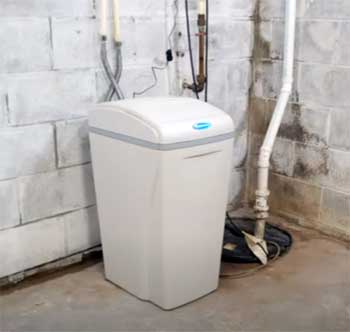
- Price and Value: RainSoft’s EC5 cost me $7,800, a big investment compared to WaterBoss’s Model 950, which you can snag for $600-$1,000. WaterBoss is a budget champ, ideal for small homes with moderate water hardness. However, RainSoft’s lifetime warranty and premium features like Wi-Fi connectivity justify the price for me. WaterBoss’s 10-year warranty is decent but doesn’t match RainSoft’s long-term coverage.
- Technology and Features: RainSoft’s EC5 shines with its RainSoft Remind app, letting me monitor salt and water usage from my phone. WaterBoss has a basic digital controller but no smart features or app integration. If you love tech like I do, RainSoft’s modern interface feels like a luxury. WaterBoss keeps it simple, which might suit you if you don’t need bells and whistles.
- Water Quality and Performance: Both systems soften water well, but RainSoft’s ion exchange process, backed by WQA and NSF certifications, delivers silky water for my showers and dishes. WaterBoss handles up to 35 grains per gallon but struggles with very hard water. RainSoft’s customization for my 13-grain water makes it more versatile for tougher conditions.
- Durability and Warranty: RainSoft’s tank-within-a-tank design and lifetime warranty are rock-solid. WaterBoss’s plastic build feels less sturdy, and its 10-year warranty covers less. RainSoft’s durability gives me confidence it’ll last decades, while WaterBoss is better for short-term, budget-conscious use.
- Maintenance and Operating Costs: RainSoft’s salt refills ($10-$20 per bag) and filter replacements add up. WaterBoss uses less salt and has affordable parts, making it cheaper to run. RainSoft’s app makes maintenance easier, but WaterBoss wins for low ongoing costs.
RainSoft EC5 Vs. Aquasure Harmony Series
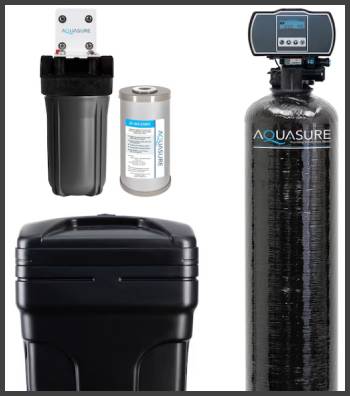
- Price and Value: Aquasure’s Harmony Series, priced at $1,200-$2,000, is much cheaper than RainSoft’s $7,800. Aquasure’s 10-year warranty is solid, but RainSoft’s lifetime coverage and customization options make it feel like a premium buy. If budget’s tight, Aquasure’s a great value.
- Technology and Features: RainSoft’s Wi-Fi app and microprocessor controller outshine Aquasure’s touch-screen interface. Aquasure’s controls are user-friendly but lack the smart monitoring I love about RainSoft. If you want a tech-savvy system, RainSoft’s the clear winner.
- Water Quality and Performance: Aquasure’s dual-tank design ensures continuous soft water, great for big families. RainSoft matches this performance and offers tailored settings for my water hardness. Both are WQA-certified, but RainSoft’s flexibility gives it a slight edge for my needs.
- Durability and Warranty: RainSoft’s robust build and lifetime warranty beat Aquasure’s 10-year coverage and less sturdy resin tank. RainSoft feels like a long-term investment, while Aquasure’s durability is decent but not top-tier.
- Maintenance and Operating Costs: Both require regular salt refills, but RainSoft’s proprietary filters are pricier than Aquasure’s standard ones. Aquasure’s maintenance is simpler, but RainSoft’s app makes upkeep more convenient.
RainSoft EC5 Vs. Kinetico Premier Series
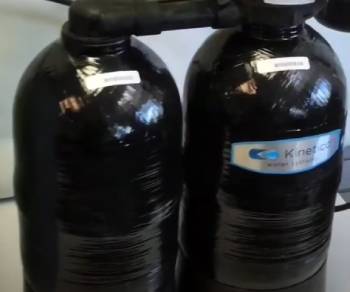
- Price and Value: Kinetico’s Premier Series, at $3,000-$6,000, is more affordable than RainSoft. Kinetico’s non-electric design saves on power, but RainSoft’s lifetime warranty and smart features add more value for me. Kinetico’s a strong mid-range option.
- Technology and Features: Kinetico’s non-electric system is clever, using water pressure to operate, but it lacks RainSoft’s Wi-Fi app and digital monitoring. RainSoft’s tech makes it feel futuristic, while Kinetico prioritizes simplicity.
- Water Quality and Performance: Both deliver excellent soft water, with Kinetico’s twin-tank system ensuring no downtime. RainSoft’s customization and certifications match Kinetico’s performance, but its app gives me better control.
- Durability and Warranty: RainSoft’s lifetime warranty and sturdy build outlast Kinetico’s 10-year warranty. Kinetico’s non-electric design is durable but not as robust as RainSoft’s tank system.
- Maintenance and Operating Costs: Kinetico’s proprietary parts are pricey, while RainSoft’s app helps me manage maintenance efficiently. Both use similar amounts of salt, but Kinetico’s non-electric operation saves a bit on power.
RainSoft EC5 Vs. Rheem Preferred Series
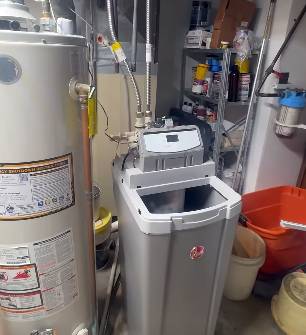
- Price and Value: Rheem’s Preferred Series, at $1,000-$2,500, is a steal compared to RainSoft. Rheem’s 10-year warranty is standard, but RainSoft’s lifetime coverage and premium features justify the higher cost for me.
- Technology and Features: Rheem’s control panel is user-friendly but lacks RainSoft’s Wi-Fi and app integration. RainSoft’s smart features make monitoring a breeze, while Rheem sticks to basic functionality.
- Water Quality and Performance: Both soften water effectively, but Rheem may need more frequent regeneration for high-hardness water. RainSoft’s tailored settings handle my 13-grain water better, with consistent results.
- Durability and Warranty: RainSoft’s rugged design and lifetime warranty surpass Rheem’s 10-year coverage and less heavy-duty build. RainSoft feels like a tank, while Rheem’s solid but not as enduring.
- Maintenance and Operating Costs: Rheem’s widely available parts keep maintenance costs low. RainSoft’s proprietary filters are pricier, but its app simplifies upkeep. Rheem’s a budget-friendly choice for maintenance.
Frequently Asked Questions (FAQs)
For me, absolutely. The EC5 transformed my water quality, making showers, laundry, and dishes noticeably better. The smart features and lifetime warranty add value, but the high cost—around $7,000-$13,000—might not suit everyone. If you’re battling hard water and value convenience, it’s a solid investment. For budget-conscious folks, brands like Culligan or SoftPro might be enough.
I couldn’t find any major, widely publicized lawsuits specifically against RainSoft. Some online complaints mention aggressive sales tactics or disputes over pricing, but these are individual grievances, not class-action lawsuits. RainSoft’s BBB A+ rating suggests they handle issues well. If you’re concerned, ask your dealer for clear contract terms upfront.
RainSoft’s pricing varies based on water hardness, system configuration, and installation. My EC5 cost $7,800, but quotes range from $5,000 to $13,000. You won’t find prices online—you’ll need an in-home consultation. For exact costs, contact a local dealer via RainSoft’s website.
With proper maintenance, RainSoft systems can last 15-20 years or more. The lifetime warranty covers the tanks, valves, and electronics, so you’re protected against defects. Regular care—like cleaning the resin bed and checking for salt bridges—extends the lifespan. My system’s still going strong after six months, and I expect it to last decades.
Why RainSoft Is My Go-To and Should Be Yours?
After living with my RainSoft EC5, I can’t imagine going back to hard water. The silky showers, spotless dishes, and smart app make it worth the investment. Sure, the price stings, and the sales pitch can be intense, but the benefits outweigh the drawbacks for me.
If you’re tired of limescale and lackluster water, RainSoft’s a game-changer.
Get a free in-home water test, see the difference for yourself, and join me in the soft water club—you won’t regret it.
